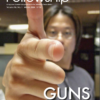Before I get into the economics of this problem, I need to establish from the very beginning that the University of Rochester has always been committed to the enterprise of war. Students have enlisted in every major United States military contest beginning with the Civil War; a legacy that continues through the present day in conflicts such as Iraq and Afghanistan.
From 1943-1986, the University of Rochester was a U.S. Department of Energy facility. According to the Energy Employees Claimant Assistance Project:
“Although much of the early theoretical and experimental work that led to development of the first nuclear weapon was accomplished outside the U.S., American researchers made a number of fundamental contributions as well. Prior to 1942, the UR was one of the institutions that contributed to early nuclear physics research in the U.S. The university was responsible for more than a hundred projects in chemistry, physics, biology, medicine, and psychology. During the Manhattan Project, it had major responsibility for the medical aspects of the bomb program. After the war, Rochester received the AEC contract to operate the Atomic Energy Project (AEP), which focused on the biomedical aspects of nuclear energy. The UR also received funding to study the pathology and toxicology of Beryllium as well as to study the analytical chemistry of micro-quantities.”

These claims have been well researched and officially documented, and the relationship between the military-industrial complex and the University of Rochester is well established. Yet it was only recently that I have begun to learn about the Dow Chemical recruitment strikes on the UR campus in the late 1960s and all of the ways the UR contributed to promoting and prolonging the Vietnam war. It is all quite heavy stuff.
Let’s reel it back a bit to look at the economics of this situation. According to the July-August 2018 edition of the Rochester Review, the University of Rochester is the largest private employer in upstate New York and the fifth largest in the state overall, with an economic influence that extends from employment and capital investment to purchasing and research. In fact, research alone generates a total estimated payroll of $275 million and an estimated 18 million in income and sales tax. According to their own data, over the past five years, the UR has received more than 1.7 billion in external funding from both federal and non-federal agencies.
Given the unquestioned economic and social prowess of the UR in New York State, as well as the entire northeastern region of the U.S., I wonder if it is it appropriate to openly scrutinize the UR’s partnership with the military-industrial complex. In my head at least, this question causes some degree of cognitive dissonance. It struck me again while reading the September 16, 2018 Democrat & Chronicle article headlined, “Congress OKs $80 Million for UR Laser Lab, Highest Funding Level in History.” In the piece, journalist Brian Sharp wrote:
“[T]he LLE is a smaller counterpart to the government-owned centers in California and New Mexico. The lab employs 350, has 100 students studying and working in some capacity at the River Road facility, and routinely draws scientists and researchers from across the country. Its work has both civilian and military applications.”
Reading this brief article on page 9, I thought to myself: just another example of how intertwined commerce, science, education, and culture have become at this institution. Does it matter that presumably some of the research (well hidden in classification and corporate doublespeak) is related to the manufacturing of weapons? Perhaps some of this technology may even contain the blueprint for weapons of mass destruction, weaponized artificial intelligence, and other untrammeled frontiers of killing.
Without going full throttle into a major investigation, the questions, at least to me, appear rather clear cut: Should the public know everything that is being developed in that laser lab as a matter of civic duty? Should the UR student body have full and unrestricted knowledge about what their school is doing with their money? And should all of the workers inside the lab know what they are really working for?
Other questions come to mind. When does the call to protect national security become a cover that allows an organization like the UR to simply protect their financial bottom line? Getting to the heart of the matter, can the UR carry out the mission and values of a traditional bastion of the humanities while profiteering from the destruction and suffering of others? Like I said, heavy stuff.

I do get the economics. The UR brings 27,000 jobs, has a labor income of 1.3 million, and purchases over $1 billion of goods. The UR gives a stupendous amount of charity to the greater Rochester area. Quite predictably the vast majority of people living in this community are more than content to remain in the dark about any complicity in war making. They just want the funds to keep flowing. I get it.
But let us recall the monumental words of General Dwight Eisenhower, “We must avoid the impulse to live only for today, plundering for our own ease and convenience the precious resources of tomorrow.”
What is being designed and what has already been implemented on the battlefield that has come out of that lab is a question that every citizen should have an answer for. The UR has a responsibility to be far more transparent about that basic question than they have been to date.
Moreover, just because they have the capacity to use their immense resources to develop weaponry and other “military applications” does not mean that they have an ethical mandate to do so. And just because they bring jobs and funding to our region does not give them a license to co-opt the talents and passions of our next generation.
This last point reminds me of something the radical historian Howard Zinn wrote in an essay for the Saturday Review in October 18, 1969. As a point of closure, Zinn’s words are worth recounting in full:
Knowledge is important because although it cannot confront force directly, it can counteract the deception that makes the government’s force legitimate. And the knowledge industry, which directly reaches seven million young people in colleges and universities, thus becomes a vital and sensitive locus of power. That power can be used, as it was traditionally, to maintain the status quo, or (as is being demanded by the student rebels) to change it…Those who command more obvious forms of power (political control and wealth) try also to commandeer knowledge. Industry entices some of the most agile minds for executive posts in business. Government lures others for more glamorous special jobs: physicists to work on H-bombs; biologists to work on what we might call, for want of a better name, the field of communicable disease; chemists to work on nerve gas; political scientists to work on county-insurgency warfare; historians to sit in a room in the White House and wait for a phone call to let them know when history is being made, so they may record it. And sometimes one’s field doesn’t matter. War is interdisciplinary.







